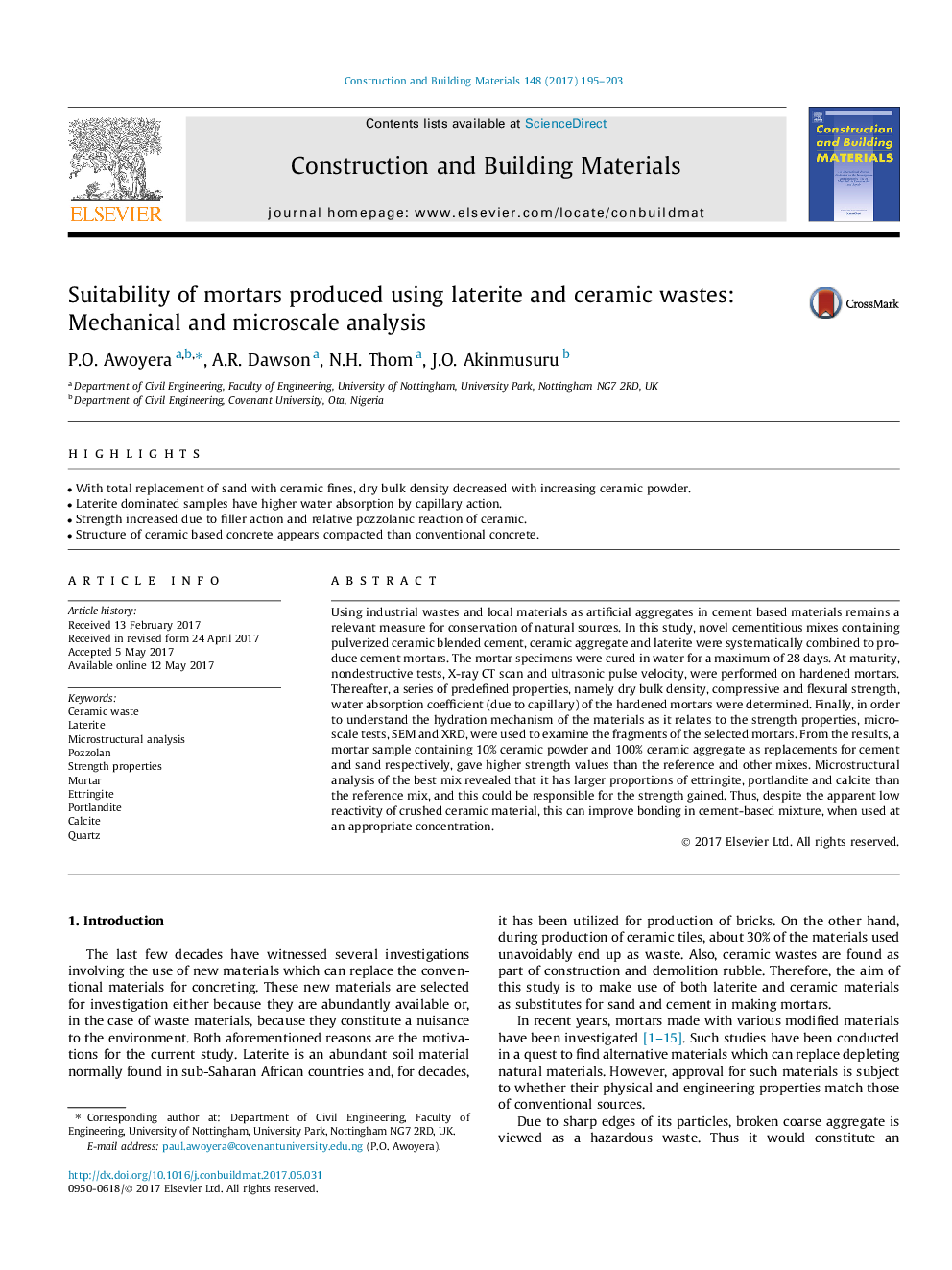| کد مقاله | کد نشریه | سال انتشار | مقاله انگلیسی | نسخه تمام متن |
|---|---|---|---|---|
| 6480299 | 1428758 | 2017 | 9 صفحه PDF | دانلود رایگان |
- With total replacement of sand with ceramic fines, dry bulk density decreased with increasing ceramic powder.
- Laterite dominated samples have higher water absorption by capillary action.
- Strength increased due to filler action and relative pozzolanic reaction of ceramic.
- Structure of ceramic based concrete appears compacted than conventional concrete.
Using industrial wastes and local materials as artificial aggregates in cement based materials remains a relevant measure for conservation of natural sources. In this study, novel cementitious mixes containing pulverized ceramic blended cement, ceramic aggregate and laterite were systematically combined to produce cement mortars. The mortar specimens were cured in water for a maximum of 28Â days. At maturity, nondestructive tests, X-ray CT scan and ultrasonic pulse velocity, were performed on hardened mortars. Thereafter, a series of predefined properties, namely dry bulk density, compressive and flexural strength, water absorption coefficient (due to capillary) of the hardened mortars were determined. Finally, in order to understand the hydration mechanism of the materials as it relates to the strength properties, microscale tests, SEM and XRD, were used to examine the fragments of the selected mortars. From the results, a mortar sample containing 10% ceramic powder and 100% ceramic aggregate as replacements for cement and sand respectively, gave higher strength values than the reference and other mixes. Microstructural analysis of the best mix revealed that it has larger proportions of ettringite, portlandite and calcite than the reference mix, and this could be responsible for the strength gained. Thus, despite the apparent low reactivity of crushed ceramic material, this can improve bonding in cement-based mixture, when used at an appropriate concentration.
Journal: Construction and Building Materials - Volume 148, 1 September 2017, Pages 195-203
